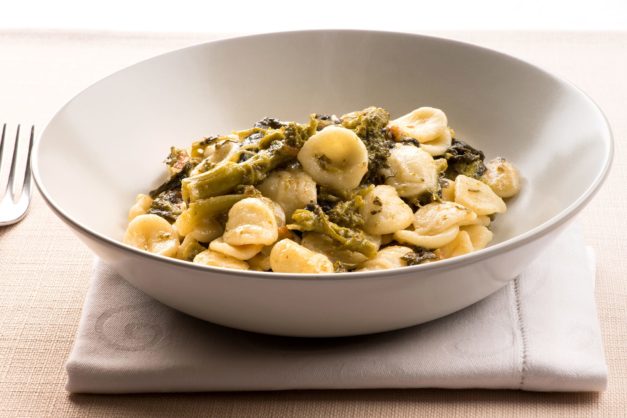When talking about Puglia from a culinary perspective, the typical Apulian products are the first that come to mind, and we almost always talk about orecchiette, friselle, and taralli.
It’s the same when going to Calabria or Sicily; we always think of the typical Calabrian products, so we always think of tasting local specialties.
Yes, these foods are undoubtedly inseparable icons of the typical Apulian cuisine. What to eat in Puglia, we will suggest shortly, are elements that have allowed our region to be known and appreciated even beyond its borders.
But there is much more to discover and love about this land, a gastronomic tradition that is the envy of all other regions of Italian cuisine. Also, because, as we know, Puglia is long and varied from every point of view.
Typical Apulian cuisine, what to eat in Puglia then? The traditional Apulian dishes use both land and sea products, and this is what makes it unique and complete. Here we give you an idea of what Apulian recipes are, province by province.
Some dishes are very typical of each other; even some areas are not mentioned, they are part of the area, dishes that satisfy every type of palate, even for those following a vegan and vegetarian diet.
Typical Cuisine of Foggia
Foggia and its province produce Muschiska, a dried meat of sheep, goat, or veal. The best-known cheese in the area is caciocavallo, but also giuncata and pecorino.
Bread and pasta are made with less refined flour, and therefore they take on a rather dark color.
Among the typical dishes of Foggia and Apulian cuisine, there are
- lagane with legumes,
- ravioli with ricotta,
- troccoli (long “square” pasta),
- the grain of the dead (typical recipe for the commemoration of the day of the dead)
- cornmeal pizza, these components make up most of the recipes of Gargano.
Among the typical sweets of Foggia, there are cartellate, fried sweet covered with apples, and all almond paste sweets, calzoncelli, and atterrate almonds.
Typical Bari Cuisine
The cuisine of Bari is also known for Cavatelli and Orecchiette (those with turnip tops in particular), but also for Maltagliate, strascinati, and tripoline.
Regarding cheese, typical are the Burrata, the Pallone di Gravina, and the Canestrato Pugliese.
Friselle and taralli also dominate in Bari, but there are also special products like Sgagliozze, fried pieces of polenta.
The best-known sweets are sasanelli, bocconotto, scarcella, and zeppola.
Typical Salentine Cuisine
Salento also has a wholly peculiar culinary tradition. In spring and summer, the dishes are mainly based on vegetables and fish, while in the winter season, homemade pasta and legumes are at the center of Salento recipes.
It is a cuisine particularly poor in the ingredients used, such as less refined flour or barley, but they give life to absolutely unique dishes.
Among these ciceri e tria (fried pasta and chickpeas), horse meat pieces in sauce, fava bean puree and chicory, orecchiette and cavatelli with strong ricotta, twisted sagne, split chicories, split tomatoes, drowned turnips, tomato friselle, paparina with olives, lampascioni (wild onions), pettole (fried batter dumplings).
Then again, the moniceddhi (snails), the scapece (fried fish in vinegar), the octopus in a pot, mussels rice and potatoes, the turcineddhi (rolls of offal), the blood sausage, the potato pie, the Lecce rustic with béchamel, the fried calzone, the puccia with black olives, friselle, and taralli of all kinds.
Regarding sweets, in Salento, almond paste reigns, which takes different forms depending on the time of year.
Also typical is quince jelly, as well as grape jam, purcedduzzi (small fried dough balls turned in honey), mustazzoli (almond biscuits, cocoa, and other flavors).
Then again, the pasticciotto (shortcrust pastry and custard) and the fruttone, a variant filled with jam and almond paste, the cupeta, the layered hazelnut, chocolate or pistachio ice cream, and the pittedde (biscuits with quince and grape jam).
Sheep’s ricotta, giuncata, stracciatella, strong ricotta, pecorino, and cacioricotta are the most known and appreciated Salentine cheeses. Salento is also a land of olives.
Being the olive tree the most widespread tree throughout the territory, the Salentine oil is the basis of the extraordinariness of all the above dishes, and a precious ally for the health and longevity of the Salentine people.
Further insights into the typical Salentine cuisine can be found here.

